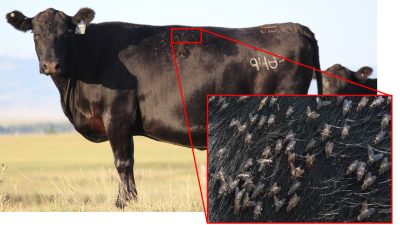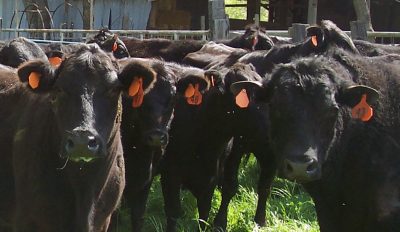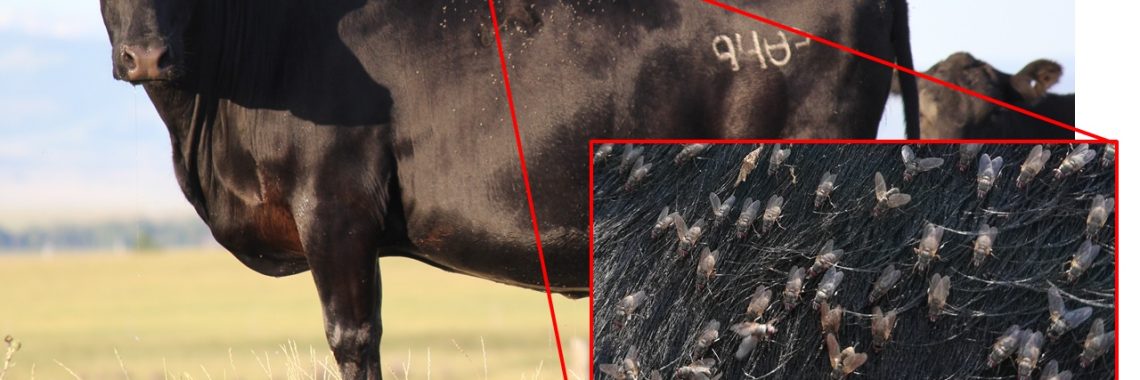A recent report published by the University of Wyoming Extension presents the latest research and management options for cattle ranchers faced with horn fly infestations.

“Horn flies are the most damaging external parasite of cattle in the U.S.,” says co-author J. Derek Scasta, rangeland management specialist for UW Extension.
Titled “Horn Fly Management for Wyoming Beef Cattle,” the new publication examines the pest’s life cycle, potential impacts on herd health, and season and altitude-related trends.
The authors explain how to estimate levels of infestation and provide management recommendations, urging producers to consider economic factors and the variety of treatment options available before taking action.
“Wyoming cattle producers should consider the complexity of the situation to determine if and when treatment is appropriate,” Scasta comments.
Counting individual flies might seem like an impossible (or impossibly tedious) task, but regular monitoring is the key to making informed management decisions. The authors offer guidelines on how to estimate flies per cow on a handful of animals to extrapolate the level of infestation for the entire herd.

These estimates can then be used to determine whether control measures are needed. For horn flies on beef cattle, the economic threshold is estimated to be about 200 flies per cow. When the number of flies on an animal exceeds this threshold, the value of loss becomes larger than the cost of control.
If treatment is deemed necessary, the authors recommend integrating multiple control strategies. Depending on the situation, control options might include animal rotation and habitat disruption; chemical treatments, such as backrubbers, ear tags and sprays; and breed selection.
Some elevations and animals may be more susceptible to high infestation levels, researchers note. UW studies suggest that as elevation increases, horn fly numbers may drop.
Certain breeds of cattle—as well as individuals within those types—may exhibit greater resistance to infestations, meaning that intentional selection may offer a viable management strategy over time.
To learn more about horn fly management, visit https://bit.ly/wyo-horn-fly for a downloadable copy of the report.





